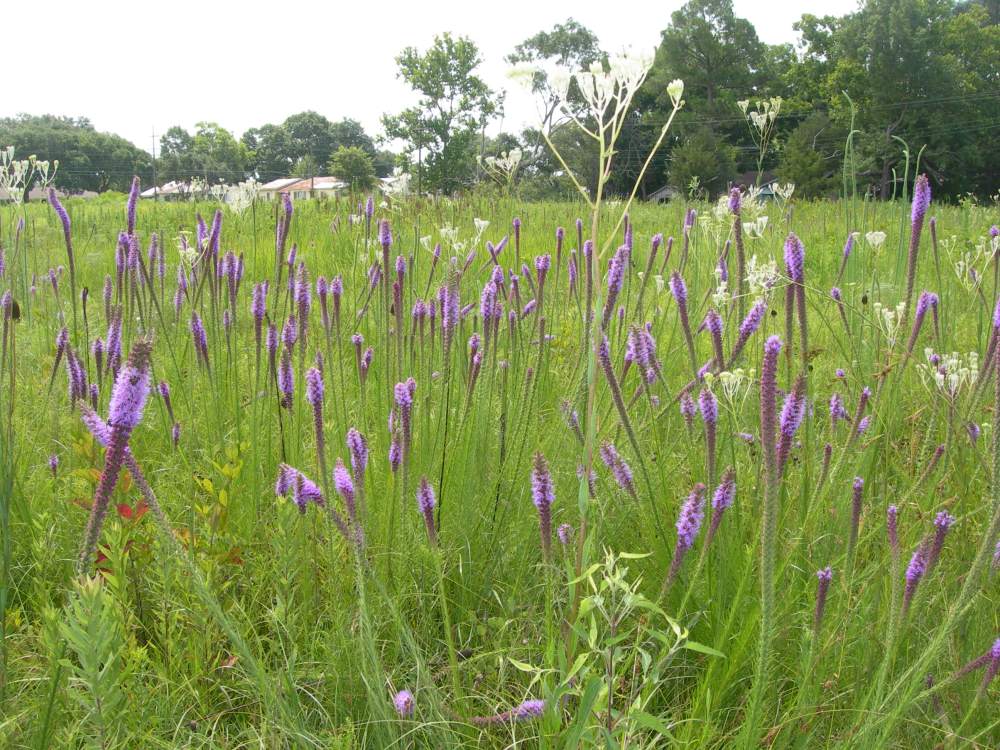
Dense blazingstar and Indian plantain in the Cajun Prairie Restoration Project in Eunice in 2013.

Close-up view of Dense blazingstar and Indian plantain with Spicebush swallowtail.
Several species begin reaching for 7-8 feet and will probably achieve 9-10 feet by the end of the season. On the first of August in 2015, Big bluestem was already 7 feet tall. Big grasses reach heights of 8 feet and sometimes up to 10 feet.
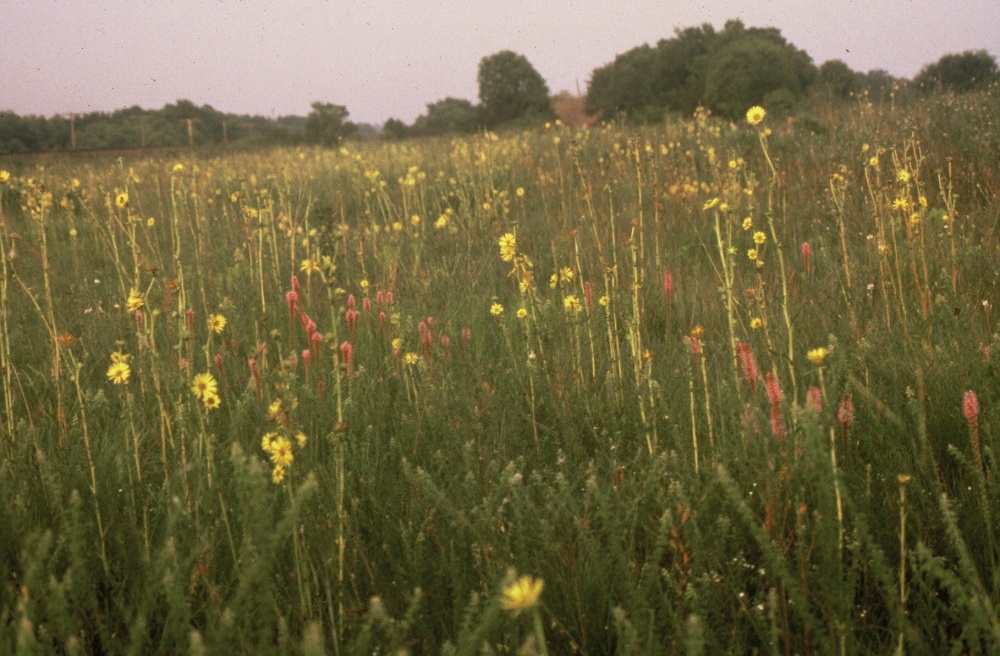
Esterwood prairie remnant in the early morning (August 1, 1989) with tall stands of Compass plant, Dense blazingstars and Rattlesnake master. This is my most memorable view of the remnant prairies.
The month begins with a splash of Liatris spicata (Dense blazingstar), Arnoglossum ovatum (Indian plantain), and Silphium laciniatum (Compass plant). Eryngium yuccifolium (Rattlesnake master) and Helianthus mollis (Ashy sunflower) continue to bloom and dominate views. The sunflower family reigns for the next 3 months. August begins looking a lot like the end of July, and it ends with the expectation of a massive bloom of Liatris pycnostachya (Kansas gayfeather or Blazingstar)).
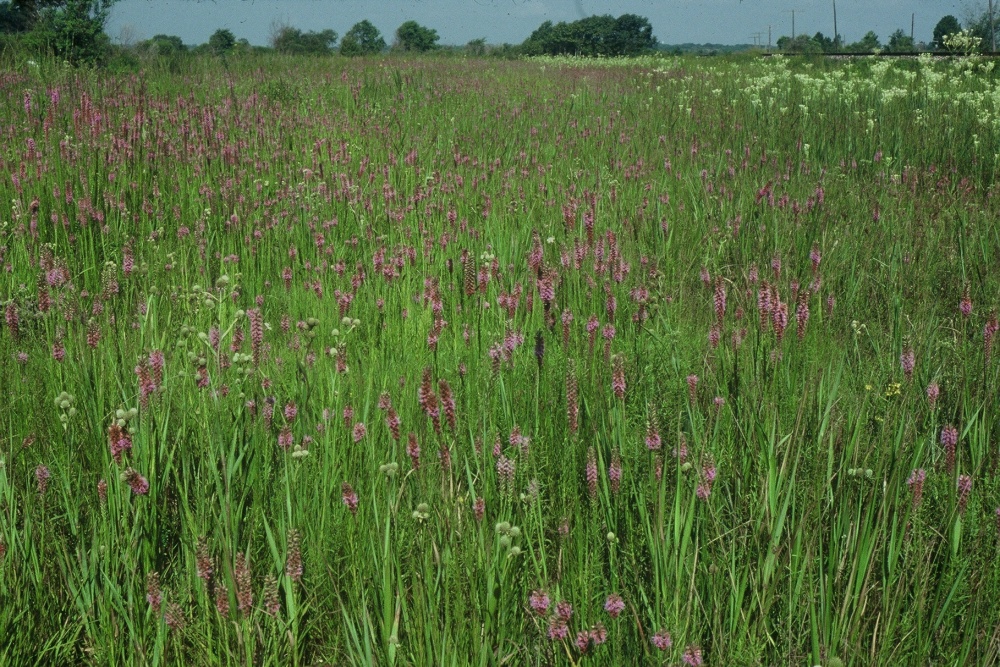
West Midland remnant prairie in August 1988. Another massive stand of Dense blazingstars, Indian plantains and Rattlesnake masters.
Rhexia mariana (Maryland meadowbeauty) has been blooming since the end of May, but its pink blooms are now abundant in wet prairies. Hydrolea ovata (Blue waterleaf), Vernonia gigantea (Giant ironweed) and Ipomoea sagittata (Salt-marsh morning-glory) are also common in wet areas.
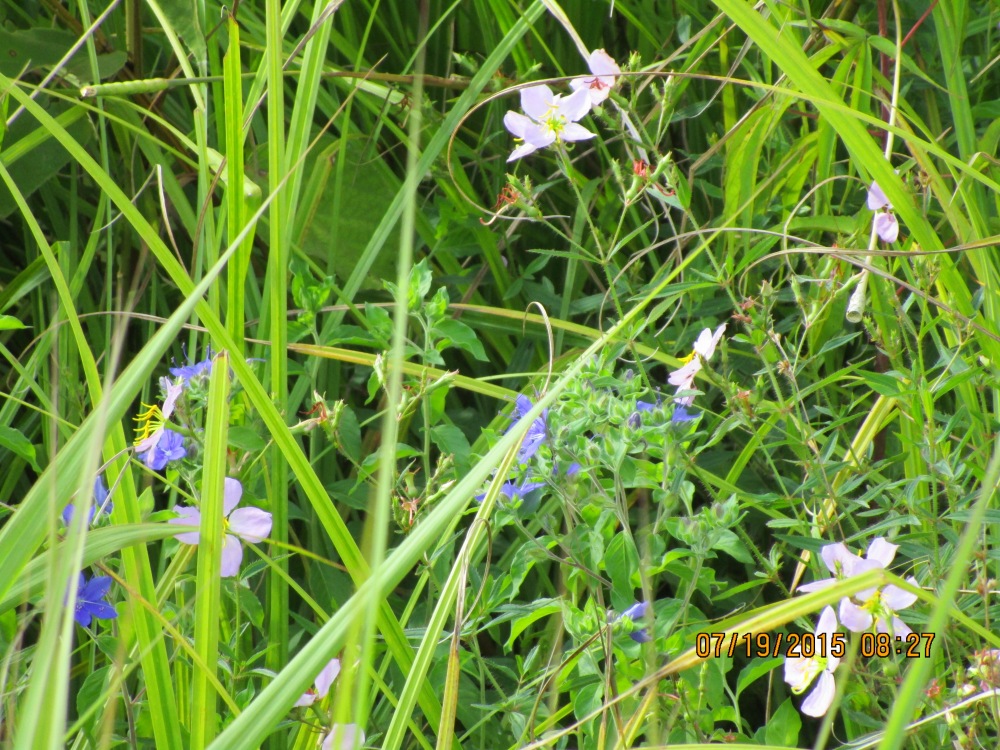
Maryland meadow beauty and Blue waterleaf in wet prairie at the Cajun Prairie Gardens.
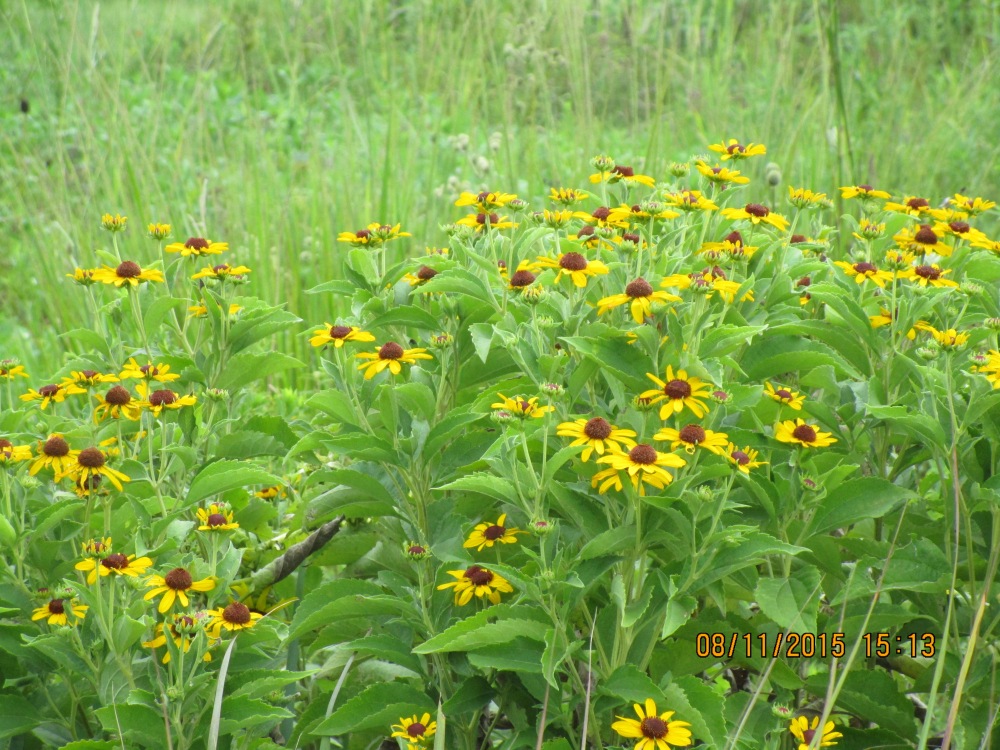
Sweet black-eyed susans at the Cajun Prairie Gardens.

Spotted beebalms at the Cajun Prairie Gardens.
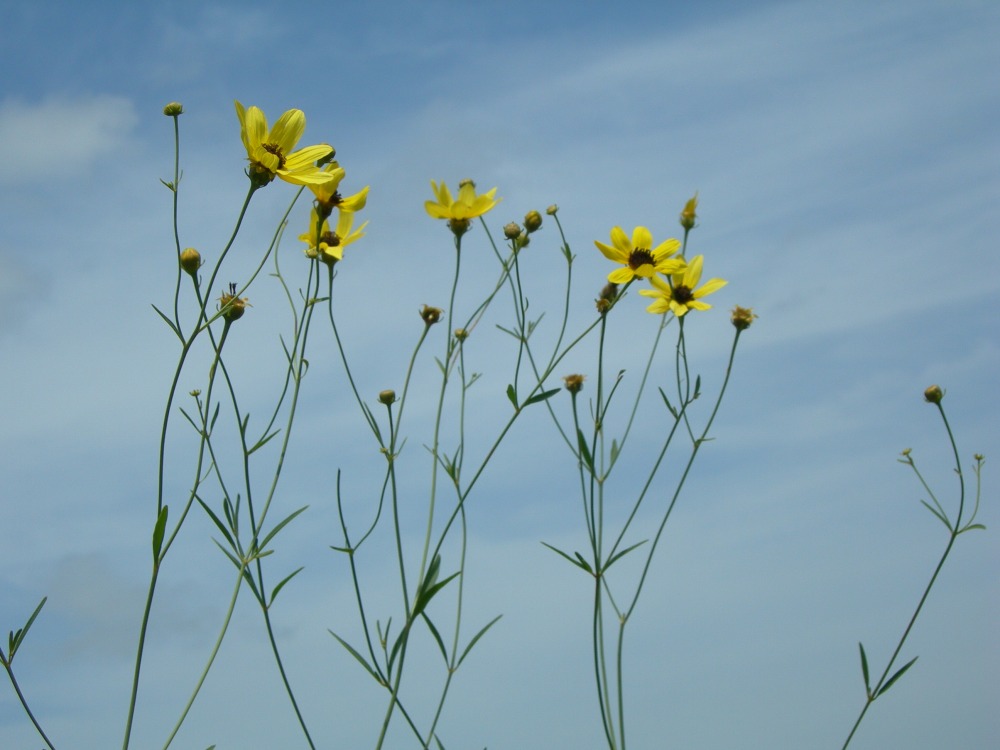
Tall tickseed–a giant superstar in both gardens.
A plant has to be large/tall to stand out among the myriad large grasses that begin taken over the scene. The grasses include Big bluestem, Little bluestem, Yellow Indian grass, Switchgrass, Eastern gamagrass, Florida paspalum, and many others. Corepsis tripteris (Tall tickseed), Rudbeckia subtomentosa (Sweet black-eyed susans), Monarda punctata (Spotted beebalm), Salvia azurea (Blue sage), Physostegia praemorsa (Obedient plant), and Pycnanthemum albescens (White-leaf mountain mint) start to put on a show.

Marc Pastorek stands among clumps of Big bluestem at the Cajun Prairie Gardens.
Gaura parviflora (Long-flowered beeblossum) is 7-8 feet tall with tiny beeblossum blooms. Manfreda virginica (American aloe agave) stands 5-8 feet and has small flowers lacking sepals and petals; however, it has aloe agave-like leaves that often have spots. Desmodium spp. (Beggar’s ticks or lice), a very tall pea plant with small pea flowers, blooms here and there—these plants produce seed that stick tightly to clothes as one walks through the prairie in September and October.
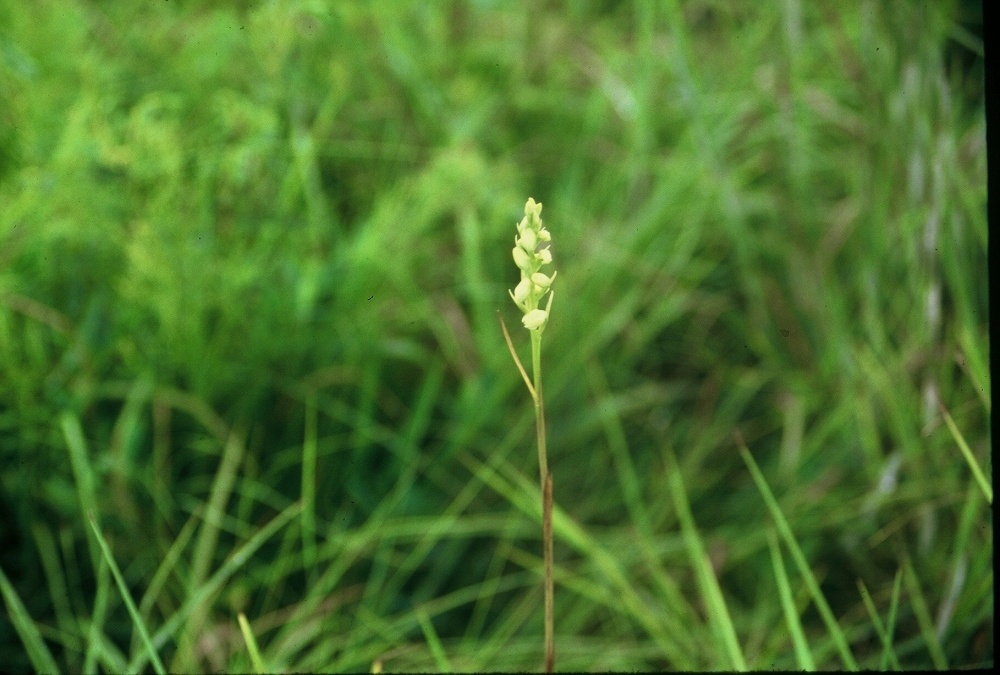
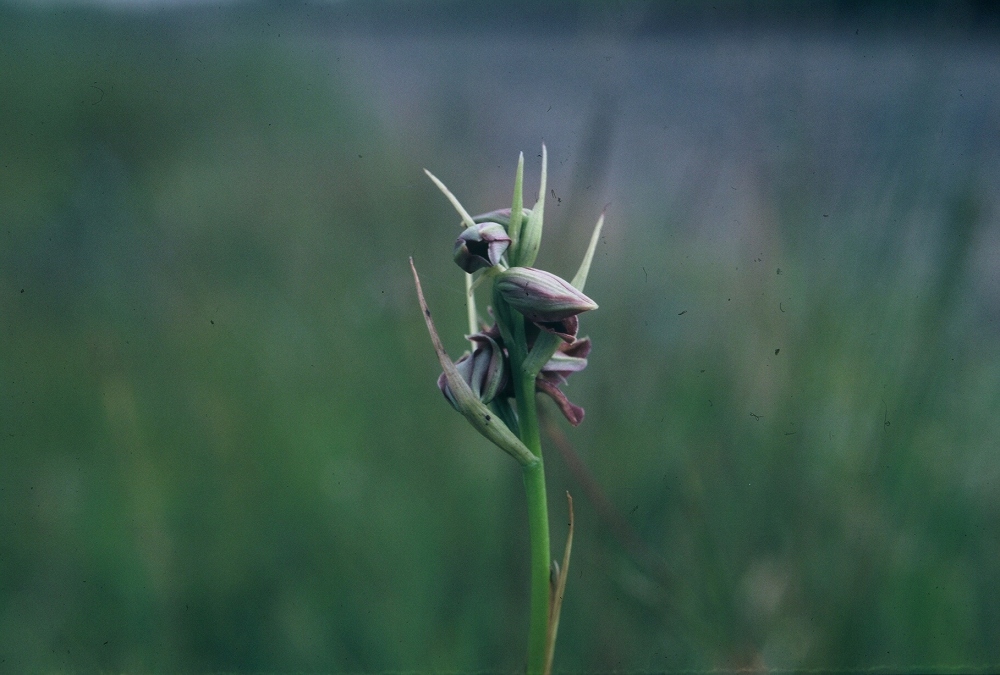
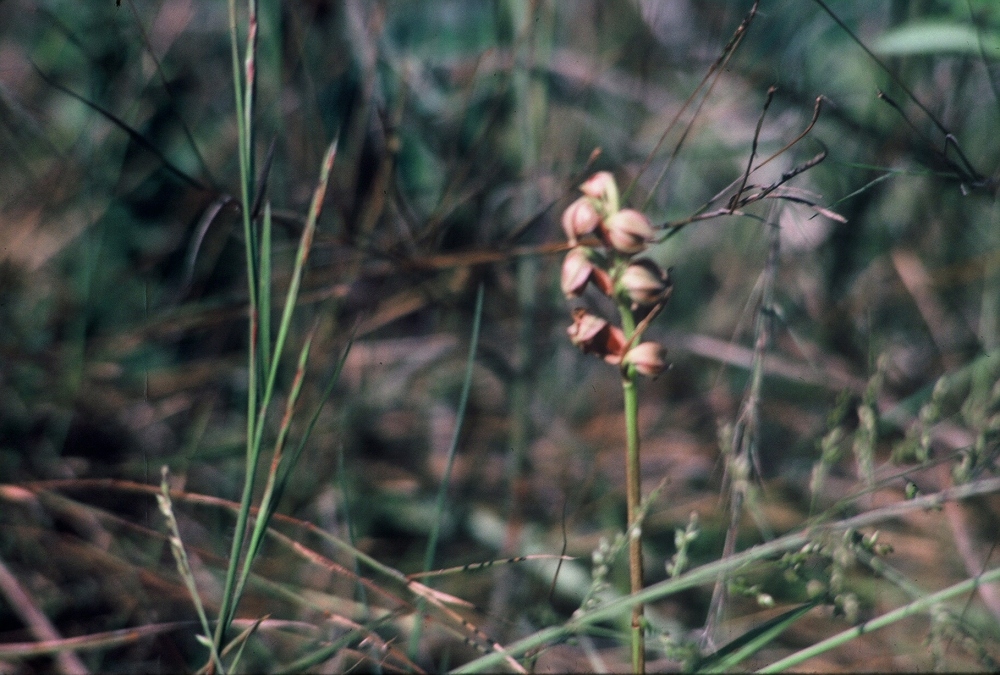
Three views of Wild coco orchids from the Kinder and South Fenton prairie remnants.
Pteroglossapsis ecristata (Wild coco orchid) blooms. This orchid was not common in the remnant prairies, but several specimens have survived in the Cajun Prairie Restoration Project in Eunice. During the 1980s, Charles Allen could spot these inconspicuous blooms, whereas I could not. Populations of this orchid persist in Kisatchie National Forest and on Fort Polk, but it is not likely surviving on the remnant prairies. Two color varieties, purple and yellow blooms, co-occurred in the remnant prairies.
August is hot, but some mornings and late afternoons are bearable. In the gardens, butterflies finally start to really increase in numbers. The most common species are Gulf fritillaries and Buckeye butterflies—caterpillars of the former feed on Passionvine (Passiflora spp.), while caterpillars of the latter feed on False foxgloves (Agalinis spp.).

Gulf fritillaries mating upon emergence of the female from her pupa.

Gulf fritillary.
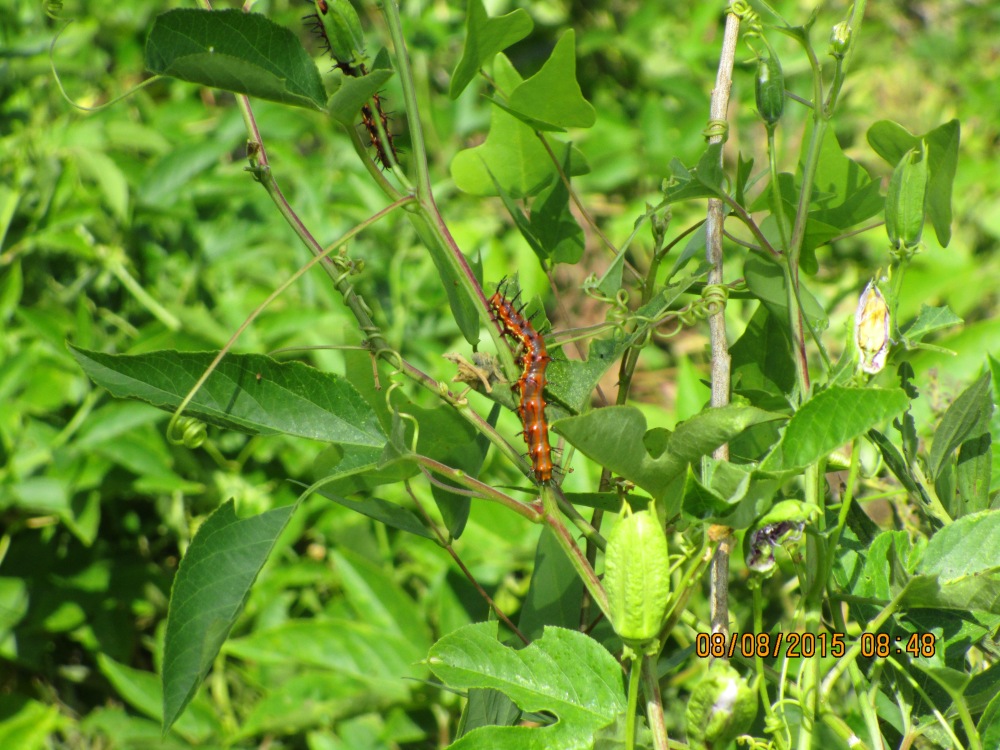
Gulf fritillary caterpillar on Passionvine.
What was blooming in the Cajun Prairie Gardens on August 1, 2015?
- Silphium laciniatum
- Silphium gracile
- Asclepias tuberosa
- Asclepias perennis
- Asclepias lanceolata
- Gaura lindheimeri
- Rudbeckia hirta
- Coreopsis tinctoria
- Mimosa hystricina
- Ludwigia sp.
- Ruellia spp.
- Euphorbia corallata
- Conoclinium coelestinum
- Tephrosia onabrychoides
- Rudbeckia hirta
- Asclepias verticillata
- Sabatia spp.
- Hypericum spp.
- Thalea dealbata
- Eryngium yuccifolium
- Kosteletskia virginica
- Hibiscus coccinea
- Ipomoea sagittata
- Chamescrista fasciculata
- Passiflora incarnata
- Canna spp.
- Coreopsis tripteris
- Helianthus mollis
- Liatris acedota
- Liatris spicata
- Liatris squarrosa
- Arnoglossum ovata
- Manfreda virginica
- Salvia azurea
- Hydrolea ovata
- Pycnanthemum muticum
- Rhexia mariana
- Lythrum lineare
- Cephalanthus occidentalis
- Galactea volubilis
- Gaillardia aestivalis
- Helenium spp.
- Lippia sp.
- Strophlostyles
- Centrosema butterfly pea
- Rudbeckia subtomentosa
- Gaura longiflora
- *Pycnanthemum albescens
- Vernonia texana
- *Vernonia gigantea
- *Oligodendron nitida
- *Monarda punctata
- *Agalinis spp.
*first blooms apparent
Posted by M. F. Vidrine (021716) (malcolmvidrine@yahoo.com)